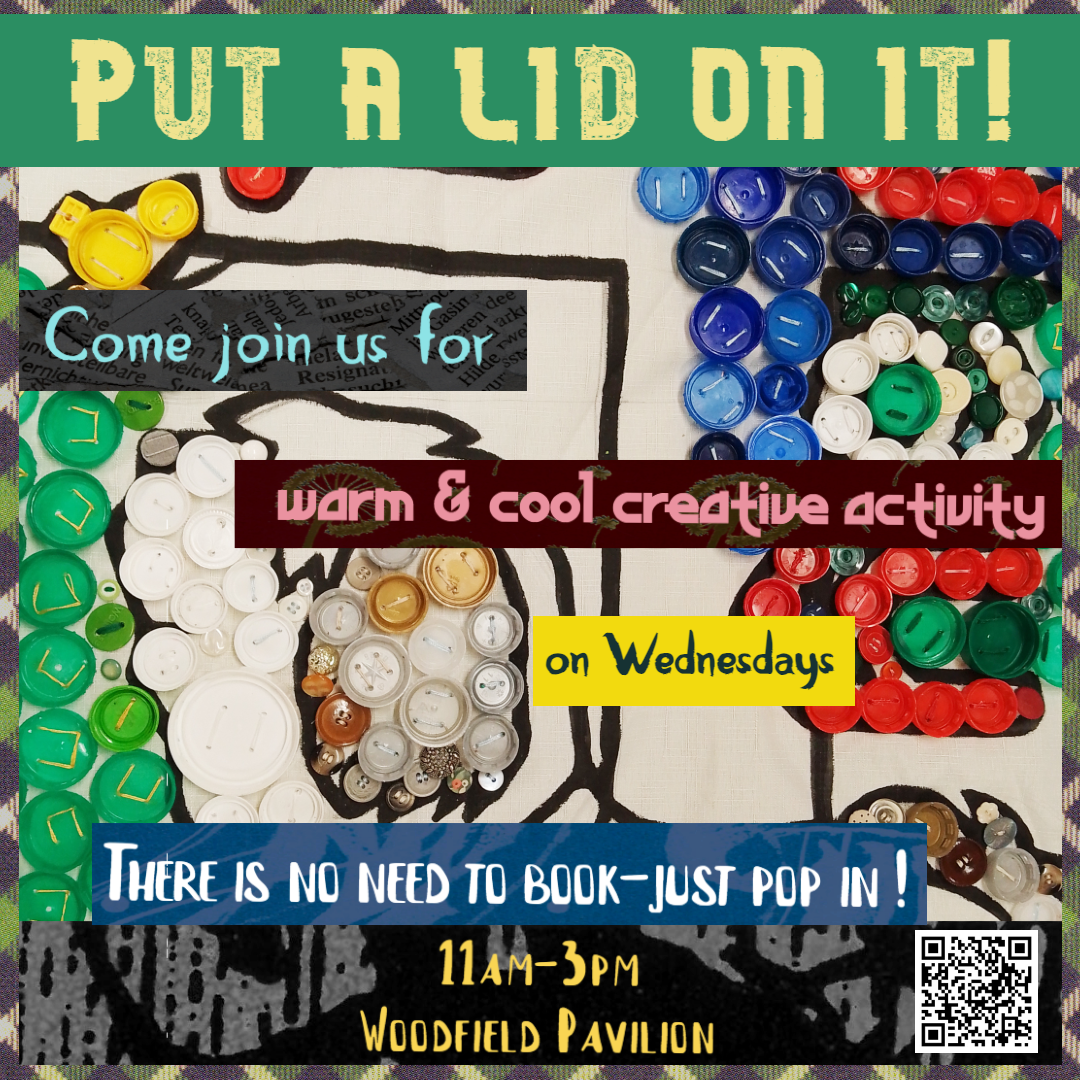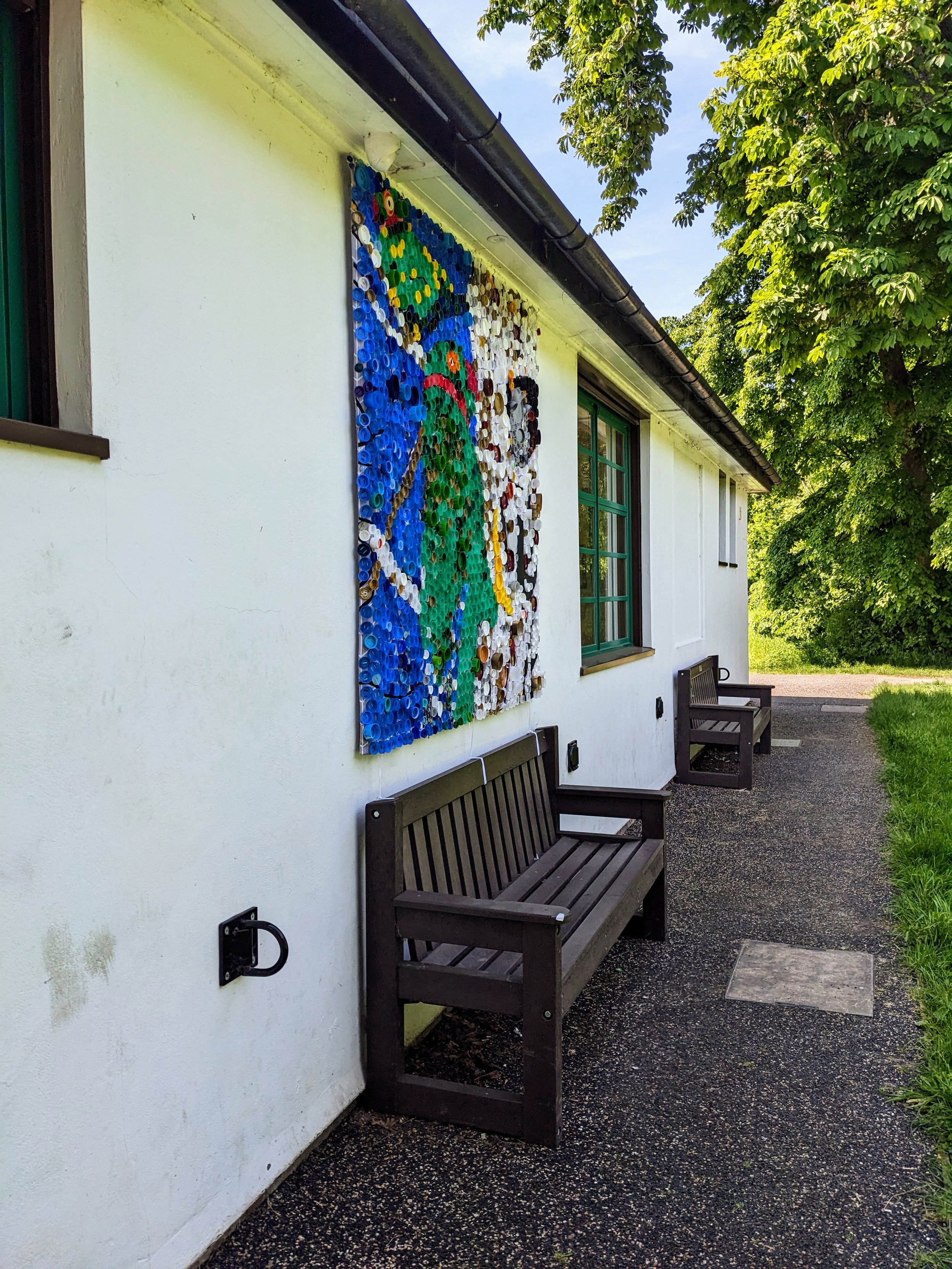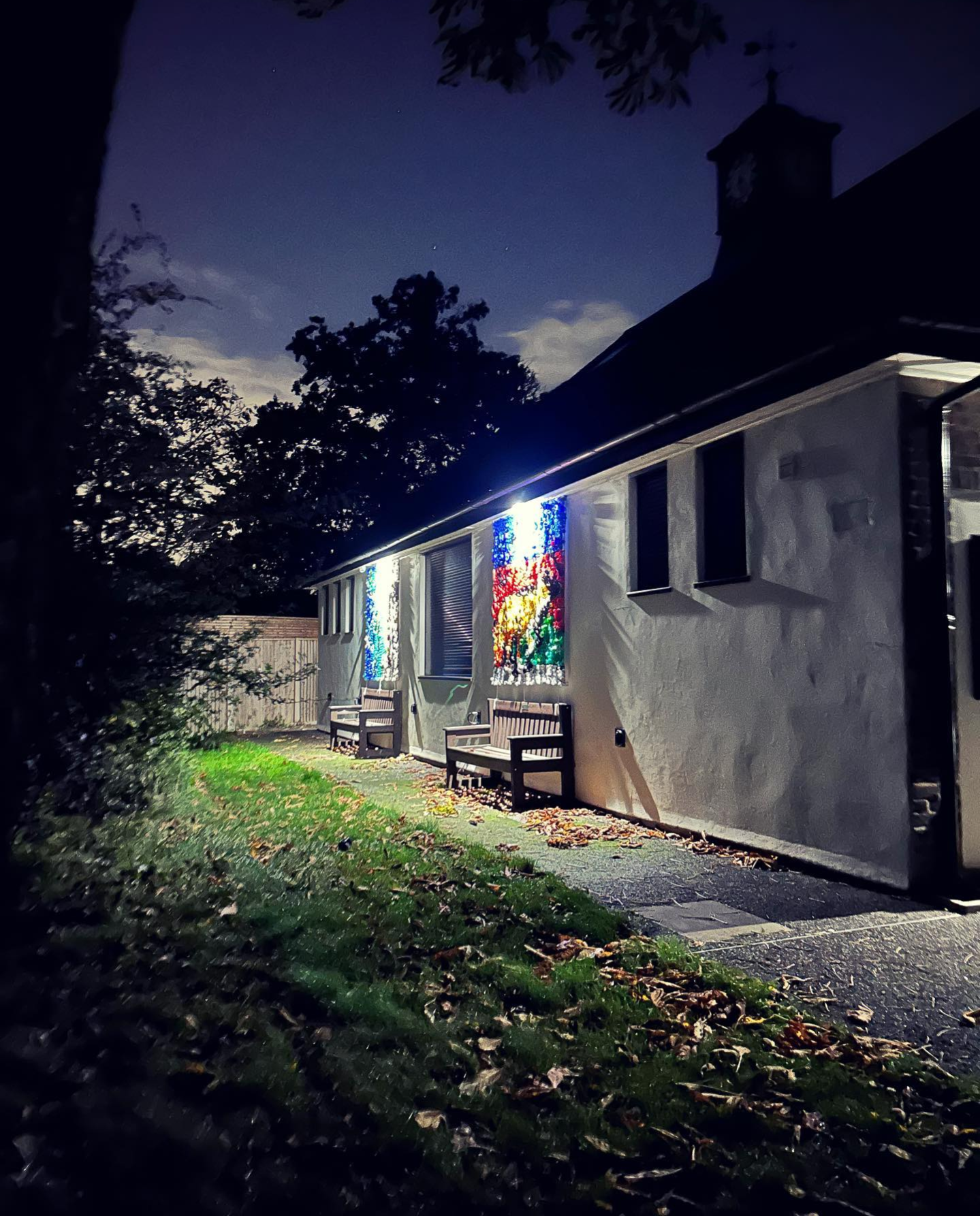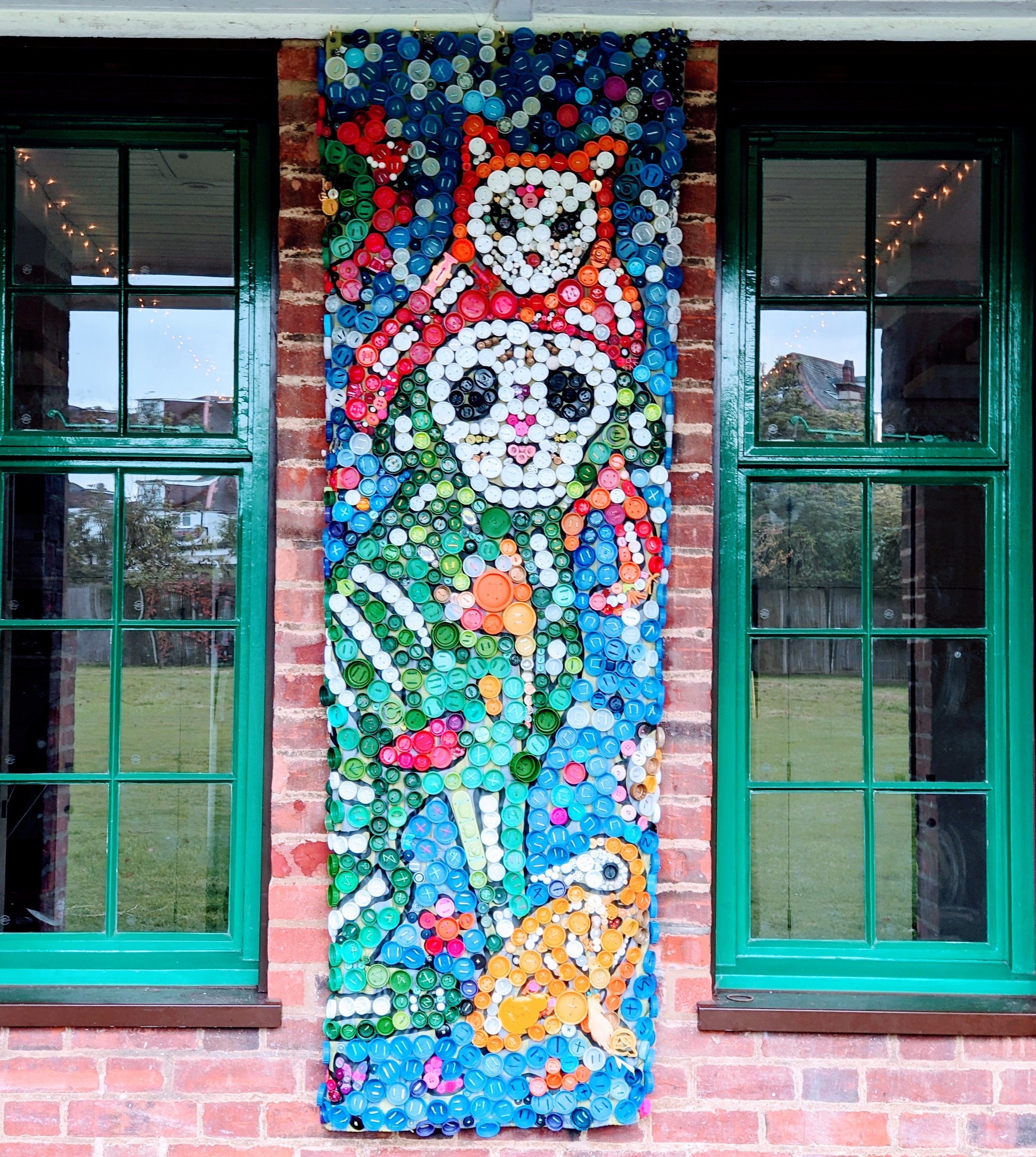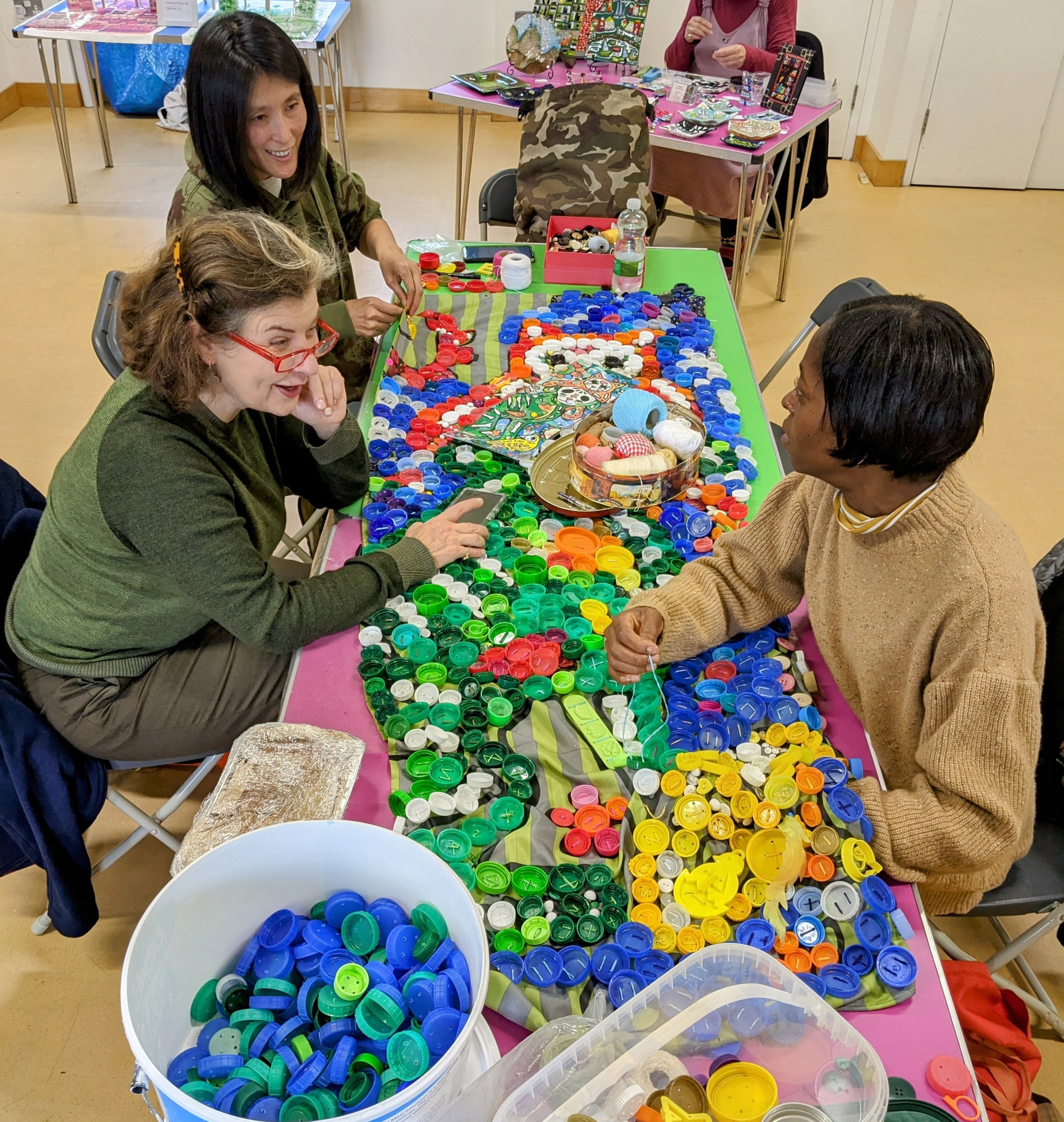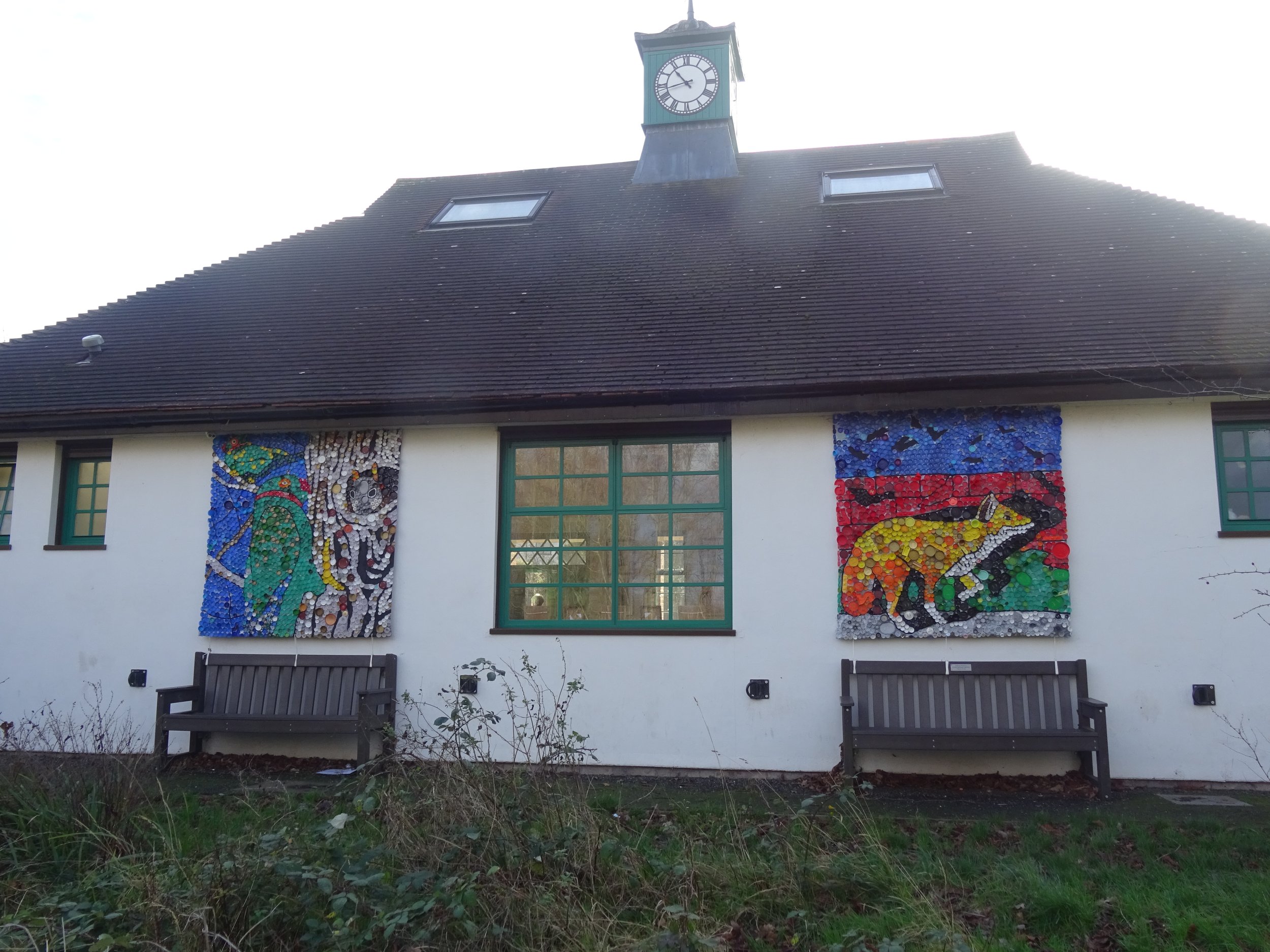Woodfield Pavilion - Artists in Residance
Art of Cut and Paste - Uki Otake & Pippa Jameson Evans
started March 2023 - And still going strong
We, Uki Otake and Pippa Jameson Evans, are the artists behind the Woodfield’s wildlife wall. It took us almost six months to complete both pieces.
We were interested in alternative mosaic, and intrigued by Kintsugi-inspired arts, the fusion of Western and Eastern styles in artwork. We love the idea of synchronizing traditional techniques with eccentric materials, representation of a profound respect for the past, and a forward-thinking perspective.
Kintsugi is the art of repairing broken pottery. Rather than throwing the broken pottery away, the broken pieces are assembled and carefully reconstructed with a special compound infused with gold. Today, many artists incorporate Kintsugi principles into their work, using the technique not just for ceramics but for a variety of materials.
Instead of tiles, glasses and broken china with gold, we have used colourful plastic bottle tops, threads and old shower curtains. We developed our own version of a community mosaic art project by inviting local residents to help us bring the pieces together. We found a way to redefine what wholeness looks like and made something beautiful out of rubbish. Just as a mosaic is made up of many individual tiles, each plastic bottle, each stitch, is unique and contributed to the overall picture. It built on the idea that in embracing flaws and imperfections, you can create an even stronger, more beautiful piece of art. The materials we used were mainly collected from the Work & Play Scrapstore (Tooting) and from donations made by friends and neighbours, in a uniquely collaborative ‘Wednesday Social Art’ project.
Kintsugi is also seen as a metaphor for the concept of Wabi-Sabi, which encourages people to slow down and appreciate the small moments in life. Since it’s quite a slow activity, you might feel like it is time wasting but, in fact, the slowness is beneficial to our mental health and physical well-being. The slow creative process helps you stay focused on your theme, without going all over the place.
As the activity required no specific skills, anyone could join and feel beauty in the simplicity and calmness. In addition, the arts-based engagement helps participants build cross-cultural and communication bridges, and brings people together physically and culturally.
We continue to stay focused on the process of the art, in which the value is the experience of creating the artwork and exploring materials and techniques, rather than the final product. It’s about not trying to force a particular outcome.
We can learn from mistakes in a pressure-free way, and most importantly, have fun.
Hustling and Jostling: an Art Residency at the Woodfield Pavilion
November 2023
REPTILIAN - JUSTINE FORMANTELLI
Artists Melanie and Justine met a year ago at the Woodfield Pavilion at an exhibition. They kept in touch through Instagram and met again last spring. They both run art workshops and thought it would be a great idea to organise a couple of nature inspired art events at the pavilion; nestled right in the park and surrounded by trees and wilderness. As they talked about themes for workshops, the idea of an art residency on the Common began to take a hold. So they decided to meet weekly over several months in order to observe nature throughout the seasons and develop works from drawings and research.
They began with walks, sketching and many cups of tea during the Wednesday Social brew at the Woodfield Pavilion. Some of the earlier works were made in collaboration, layering marks and colours inspired by plants and bark. They also attended nature walks with Mike Mullins and Roy Vickery which enhanced their appreciation of the local flora.
Progressively, they started to develop larger scale works in their studios. Bold, bright and graphic on one hand, layered and moody on the other, their investigations grew into different directions and are brought back together in a playful dialogue on the walls of the pavilion.
For Melanie the focus from the beginning was on trees and plants. There was a lot of looking and drawing, trying to understand the chaos of intertwining branches with the aim of simplifying them and reducing them to their linear essence.
As time went on, aware of the changing colours and the passing of time, the focus shifted onto leaves, recording their shapes and how they would start to curl up and gradually change.
FLURRY - MELNIE RUSSELL
Justine was at first drawn to the bodily arabesques of the sinuous tree branches and trunks and then paid closer attention to the different textures of bark. As someone who is mostly preoccupied by the unseen and what lays beneath the surface, she tried to imagine the life inside trees and the complex web of exchanges within the ecosystem of the common.
The experience of meeting and exhibiting at the pavilion has been very rewarding for the two artists. It is rare to exhibit in a place that is so much more than just a space with white walls. And as mums, runners and local residents, Tooting Common has been part of their daily lives for so many years that it feels very personal to show their works there. They really enjoy seeing the park through the pavilion’s windows and greet the many dog walkers and art lovers that have been passing through.
The exhibition continues until the 3rd December and is open Thursday to Sunday from 11 to 4pm. (Saturday the 25th from 11am to 3pm and Sunday the 26th from 10 to 2pm. Closed on Saturday, December 2nd)
“Today it’s raining, the thin, abstemious rain of early April. Already the blue scilla are beginning to flower, the daffodils have their snouts above ground, the self-seeded forget-me-nots are creeping up, getting ready to hog the light. Here it comes - another year of vegetative hustling and jostling. They never seem to get tired of it: plants have no memories, that’s why. They can’t remember how many times they’ve done all this before”.
Margaret Atwood
The Blind Assassin - Gloves

